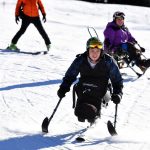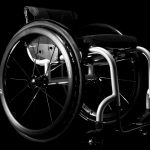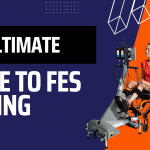We recently came across some research from the Spinal Cord Injury Rehabilitation Evidence (SCIRE) project in Canada on the factors that spinal cord injury patients need to consider when choosing and using a wheelchair.
Firstly, looking at how you should choose a wheelchair, the report says that manual wheelchairs with adjustable axle position appear to improve wheelchair propulsion and reduce the risk of upper extremity injury.
The use of lighter weight wheelchairs may improve propulsion efficiency in those with a SCI particularly at the start of propulsion. Body weight management is important in reducing the forces required to propel a wheelchair and reducing the risk of upper extremity injury
Tires with less than 50% inflation causes an increase in energy expenditure. Use of flexible or contoured handrims may reduce upper extremity strain thereby reducing discomfort and pain symptoms during wheelchair propulsion.
While the use of power-activated power-assist wheelchairs provide manual wheelchair users with paraplegia and tetraplegia with a less strenuous means of mobility, improve functional capabilities and reduce the risk of upper extremity injury.
Avoiding shoulder injury
The evidence supports that to avoid accumulating shoulder impingement stresses proper technique must be considered based on a combination of kinematics (e.g., contact angle, stroke frequency, movement patterns at each joint), stroke pattern, wheelchair fit and set up.
Neck, trunk, scapular, clavicle, elbow, wrist and shoulder kinetics and kinematics singly or cumulatively influence the efficacy of manual wheelchair propulsion therefore should all be considered in propulsion efficiency as well as in propulsion-related injuries, particularly if propulsion speed or surface slope increases
The following need to be considered in relation to propulsion and back support height
- effect on propulsion cadence
- amount of shoulder range of motion used and
- the length of the push stroke (i.e., length between the start and end position of the hand on the rim).
Wheeling cross slope can negatively affect the cadence and power that is required for wheelchair propulsion. The strength of specific shoulder and elbow muscles and the ability to flex the trunk forward all affect the efficiency in performing advanced wheelchair skills particularly those associated with wheelies and caster pop-ups.
Given the increased mechanical and muscular demands in these types of advanced skills, the quality of shoulder, elbow and trunk movements should be considered to balance protection of the upper extremity shoulder with being functional in the community.






Recent Comments